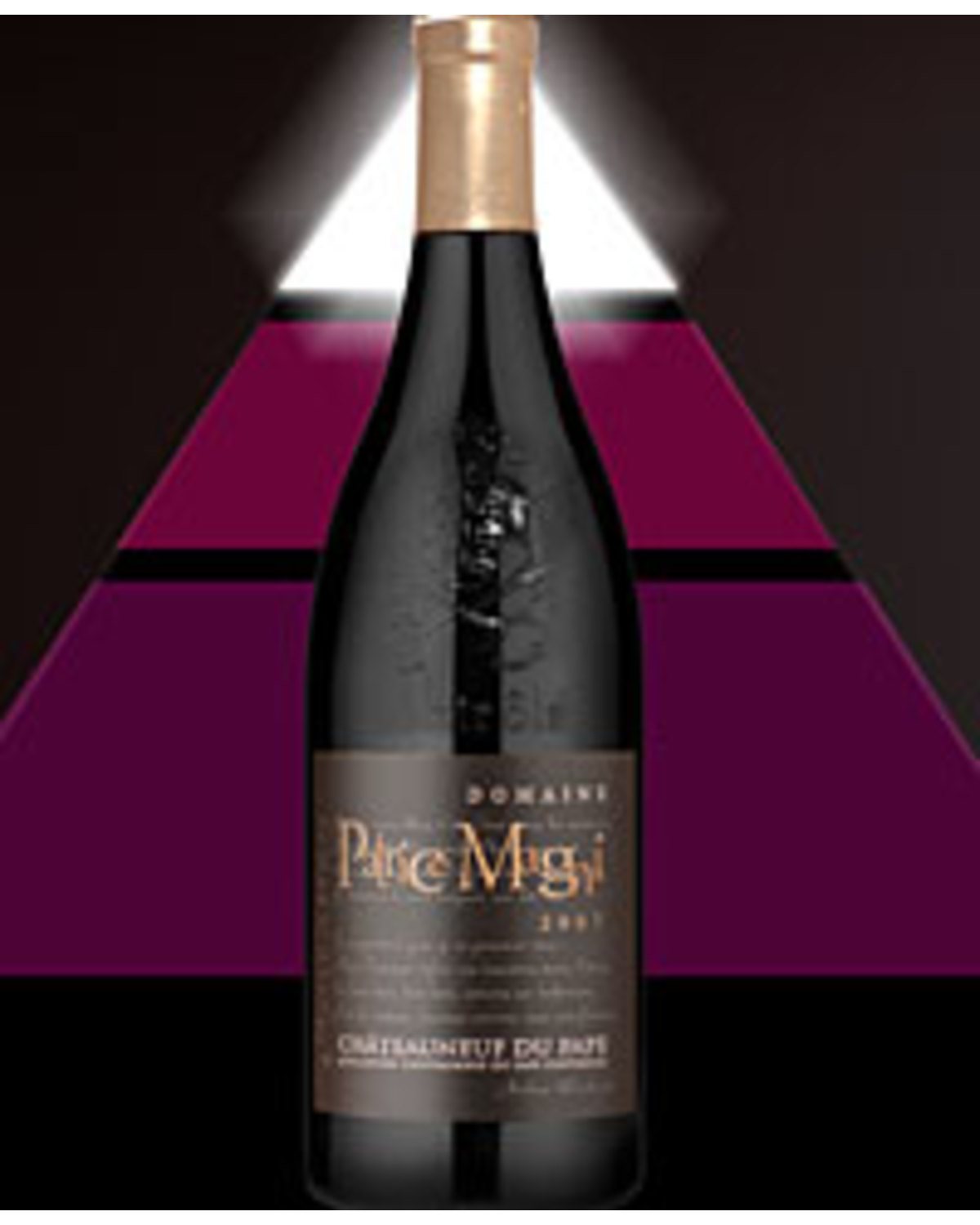
- 95
2007 Domaine Patrice Magni Chateauneuf du Pape
Chateauneuf du Pape, Southern Rhone,
FRANCE
$39. 99
Bottle
$479.88 Dozen
Cellar: 4 - 5 Years (2014-2015)
ABV: 15%
Closure: Cork
For those new to European wines, the word 'appellation' probably represents a rather cryptic nomenclature certifying that wines have originated from their designated regions or 'terroirs'. It's also the reason why French wine labels tend to emphasise 'appellation of origin' followed by the estate owner or producer, rather than emphasising grape variety. Such labels presume that the consumer already knows what grape varieties the wine is composed of (amongst other things) by virtue of the appellation information supplied. The present day organisation of the French wine industry is founded on appellation d'origine laws conceived in the early part of twentieth century, initially as a practical response to economic depression and widespread fraud within the viticultural sector. They assured consumers that wines actually came from the places defined on their labels, so protecting the integrity and quality of French wine in general, and ultimately improving sales. Later decrees were even more prescriptive, dictating winemaking standards and obliging wine makers to plant the 'correct' grape varieties and to cap cropping levels (a significant determinant of wine quality). The system remains controversial amongst winemakers and causes confusion for the average wine lover, perhaps no where more so than in the Rhone Valley. As in other French wine regions, the Rhone's Appellations d'Origine Controlees (AOCs) rely on sets of rules based around the concept of 'terroir' (the interaction of soil and climate on wine quality) as well as specific local and historic practises. Essentially, the whole system is organised as a pyramid. The further you climb towards the summit, the more restrictive the criterias for production, the more prestigious the terroir and the better the wines should be.
The 'Cotes du Rhone' AOC constitutes the base of the pyramid. The second level is the 'Cotes du Rhone Villages' AOC which follows slightly different rules. Out of ninety 'communes' allowed to produce Cotes Du Rhone Villages, eighteen of them are allowed to step up the hierarchy ladder with the mention of the village name on their labels, provided they respect the more restrictive yields as well as other analytical requirements at harvest (our last Rhone offer included wines from such villages as Cairanne, Roaix, Rasteaux and Valreas). Finally, at the top of the pyramid, we find the local appellations, for which the term 'Crus' is the norm. Here yields generaly cannot exceed 35Hls/Ha and strict conditions for cultivation apply. Chateauneuf Du Pape is one such Cru, forming the apex of the Southern Rhone's appellation pyramid. The extraordinary and long standing reputation of its wines is such that in the 14th century, the Papacy in Avignon favoured the village as their summer residence, expanding the vineyards to suitable surrounding areas. As a reminder of this region's Papal history, each bottle of Chateauneuf bears the coat-of-arms of the city of Avignon, with its two crossed keys, those of Saint Peter, the frst Pope. Seven Popes later, the rigor established in those times has survived the centuries. In fact, Chateauneuf became the working model for France's earliest appellation laws. Under the rules, 13 different varieties are permitted, though Grenache, Mourvedre, Syrah and Cinsault dominate. Counoise, Clairette and Bourboulenc play second fiddle. Hand harvests are compulsory.
Not surprisingly the wines have developed a high demand world-wide and typically command prices well above AU$70. In the best years, such as 2007, they display a youthful vibrancy and a richness that has lured Australian winemakers into 'GSM' blends, while their amazing cellaring potential can reward one of the rarest scents in the world of wine - truffles. As yet another direct import, the 2007 Patrice Magni Chateauneuf du Pape offers what is probably the most affordable opening price that a wine from this pedigree has ever attained in Australia. Tasting Note:
This is another estate that larger than life oenologist Philippe Cambie has added his magic touch to. A blend of 75% Grenache and 25% Syrah from 40-50 year old vines grown in Chateuneuf's dry, red, sandy soils. Large rounded quartz stones release day time warmth at night aiding uniform ripening - one of the keys to this region's reliability. The Grenache component for this wine was aged in tank; the Syrah in one year old small oak barrels.
It pours a near opaque, dark red, black colour with deep, dark red hue and offers lifted aromas of black cherry, liquorice, dark plum and spice followed by some meaty end notes. Full bodied, the palate delivers an abundance of rich black cherry, dark plum and liquorice favours followed by a very spicy black pepper back palate and some dried meat characteristics. Very fne grained soft tannins. Long aftertaste of black cherry, blackpepper, liquorice and again a touch of dried meat.This full bodied and feshy Chateauneuf could be cellared 4-5 years, however purists may wait longer for the terroir to fully express itself.
Cellar 4-5 years+
Alc 15.0%
Online orders & click & collect are our primary activities. However, feel free to drop in. Items at hand can be purchased instore.
Click here to read our Terms & Conditions.
Spend $200 get free delivery
to most of Australia
View all Australian freight rates
to most of Australia
No guaranteed delivery times.*
Expect increased delays on deliveries during peak times, such as Christmas.
